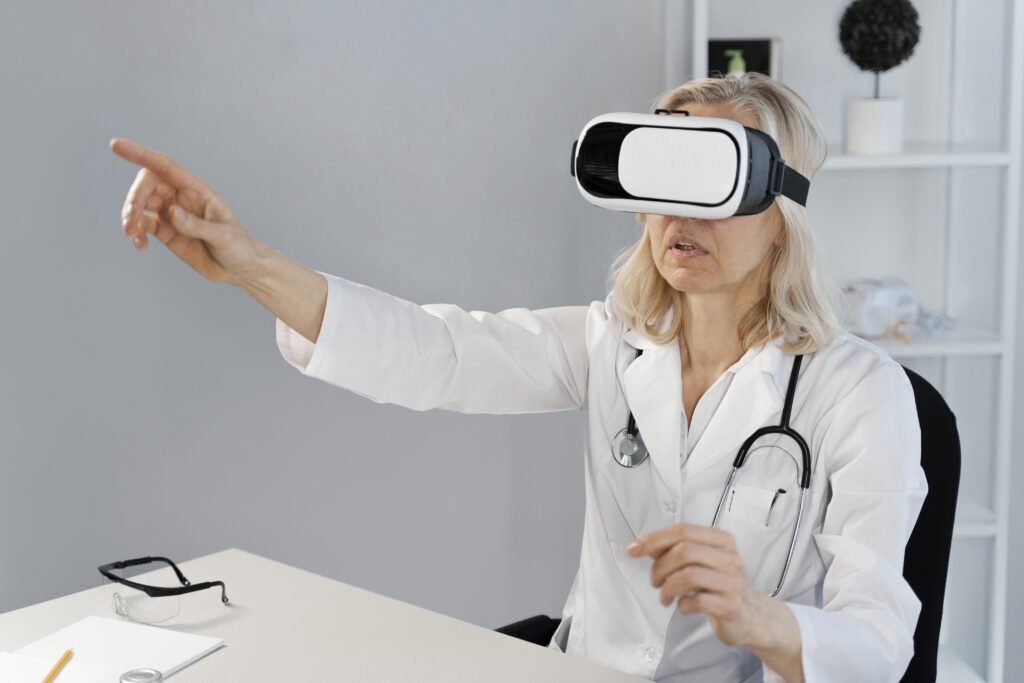Introduction to Virtual Reality in Medical Education
Virtual reality (VR) has emerged as a transformative tool in medical education. It provides immersive environments that simulate real clinical scenarios without risking patient safety. Through VR, medical students and professionals can practice procedures, refine skills, and enhance decision-making abilities. The technology integrates visual, auditory, and sometimes tactile feedback, which makes the experience more engaging and effective than traditional methods.
Enhancing Surgical Training Through VR
One of the most significant applications of VR is in surgical training. Surgeons can perform virtual operations in realistic simulations that mimic human anatomy and physiological responses. This approach allows repeated practice, which strengthens procedural memory and precision. Moreover, errors can be corrected instantly, offering a safe and controlled learning space. Research indicates that VR-trained surgeons show improved accuracy, reduced operation times, and increased confidence compared to those trained only through textbooks or cadavers.
Improving Diagnostic and Clinical Decision-Making Skills
Beyond surgical skills, VR plays a vital role in enhancing diagnostic and decision-making abilities. Medical trainees can enter virtual patient scenarios where symptoms, histories, and conditions are presented dynamically. This interactive process encourages critical thinking and fosters clinical reasoning. In addition, VR scenarios expose learners to rare medical cases that they may never encounter during traditional clinical rotations. This broader exposure increases preparedness for real-world challenges.
Patient Interaction and Communication Training
Effective healthcare depends not only on technical expertise but also on strong communication. VR offers simulated patient interactions where trainees practice empathy, counseling, and delivering difficult news. These scenarios improve both verbal and nonverbal communication skills. Furthermore, practicing in a virtual environment reduces anxiety before real patient encounters. This aspect of VR contributes to holistic training, ensuring that doctors are skilled in both clinical and interpersonal competencies.
Accessibility and Standardization of Training
VR provides standardized training experiences across different regions and institutions. Every learner can access the same modules, ensuring equality in education. This standardization addresses the variability often seen in clinical exposure. In addition, VR platforms can be accessed remotely, making medical training more inclusive for students in resource-limited settings. Consequently, VR reduces disparities in training opportunities and helps raise global standards in healthcare education.
Cost-Effectiveness and Resource Optimization
While VR systems may appear expensive initially, they reduce long-term training costs. Traditional training methods often require cadavers, specialized equipment, and physical resources, which can be limited and costly. By contrast, VR modules can be reused and updated without significant expenses. This makes VR a sustainable option for institutions seeking high-quality training at lower recurring costs. The ability to practice repeatedly without material waste further highlights the economic value of VR-based training.
Continuous Professional Development
Medical knowledge evolves rapidly, requiring ongoing education. VR offers a dynamic platform for continuing medical education and skill refreshment. Practicing physicians can update their skills by engaging with new modules that reflect current guidelines and innovations. Additionally, VR provides opportunities for interprofessional training, allowing collaboration between doctors, nurses, and other healthcare workers in a shared environment. This approach enhances teamwork and coordination, which are crucial in clinical practice.
Challenges and Future Directions
Despite its advantages, VR faces challenges in medical training. High development costs, limited availability of advanced hardware, and the need for technical expertise may restrict adoption. Moreover, some users experience motion sickness, which limits prolonged use. Nevertheless, ongoing advancements in hardware and software are addressing these barriers. The future of VR in medical education is promising, with artificial intelligence and haptic feedback expected to create even more realistic simulations.
Conclusion: VR as a Pillar of Modern Medical Training
Virtual reality has revolutionized medical education by providing immersive, safe, and standardized learning environments. It enhances surgical precision, improves diagnostic reasoning, develops communication skills, and ensures accessibility across regions. Moreover, it supports lifelong learning and cost-effective training. Although challenges remain, the continued evolution of VR technology suggests that it will become a central pillar of modern medical training. Its integration into curricula worldwide will shape a new generation of highly skilled healthcare professionals.


